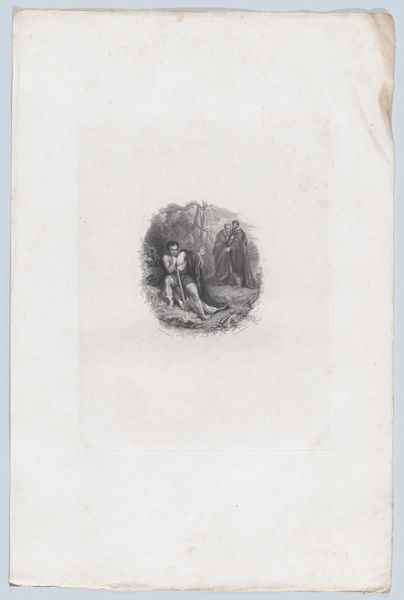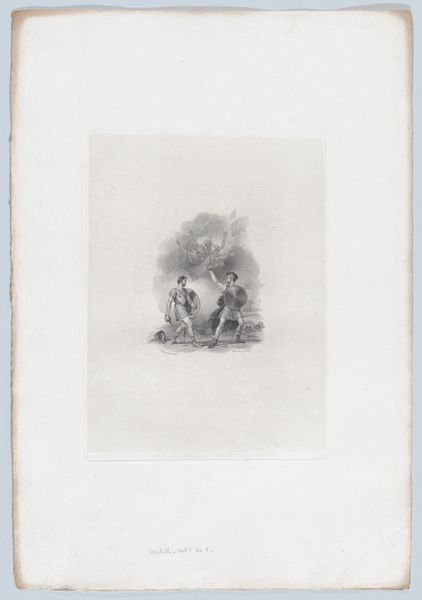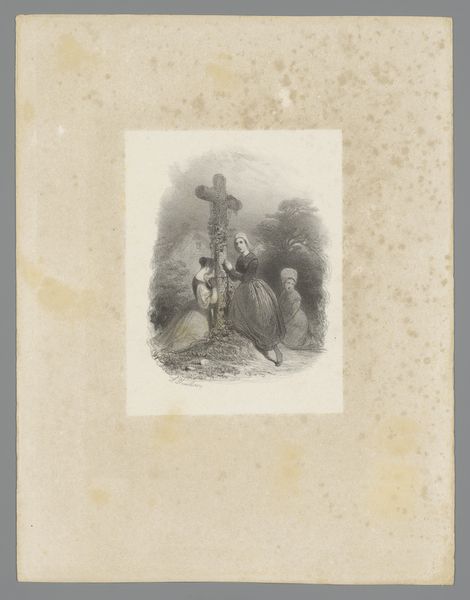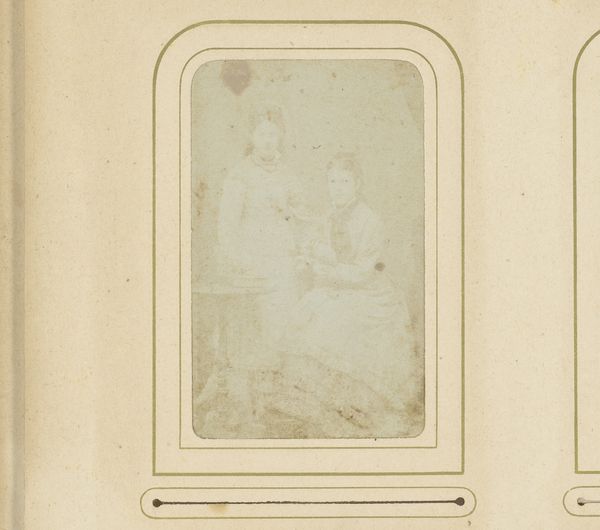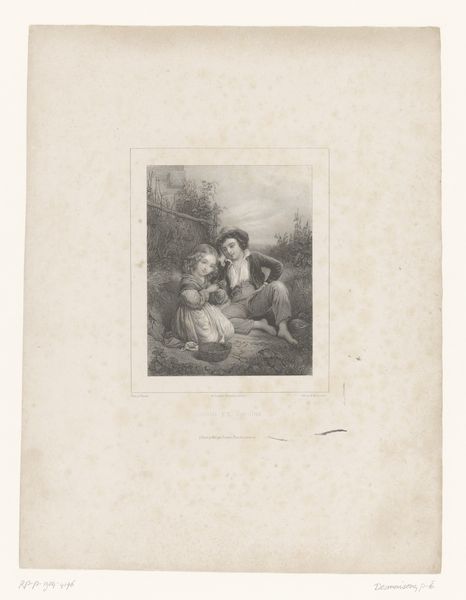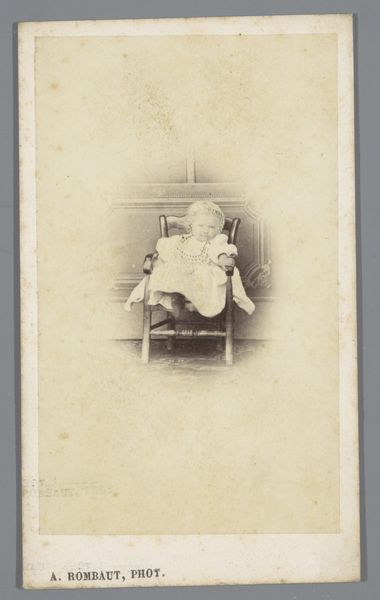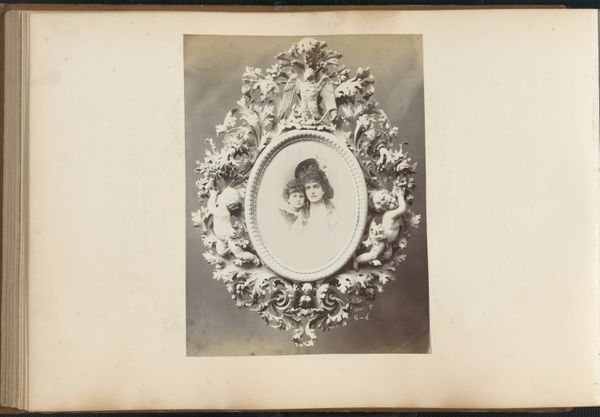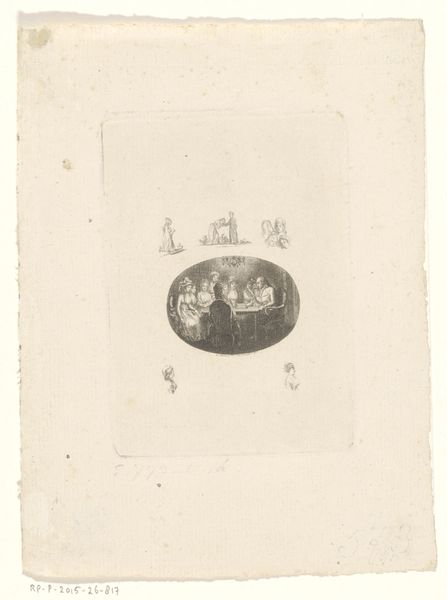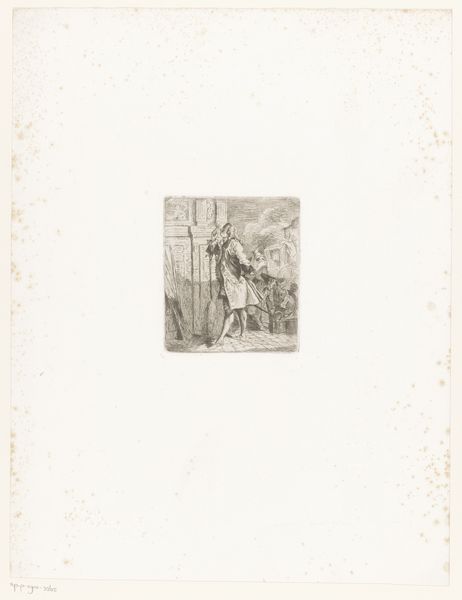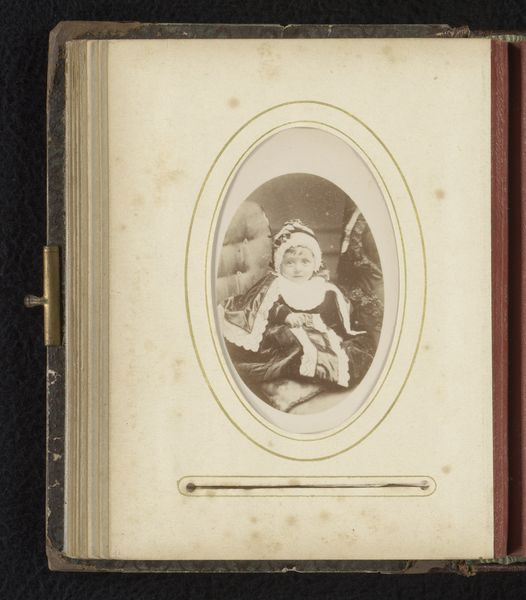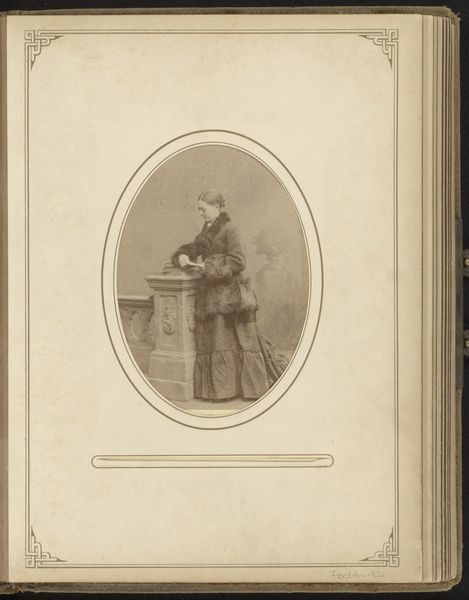
Hamlet and Ophelia (Shakespeare, Hamlet, Act II, Scene I) 1825 - 1826
0:00
0:00
drawing, print, engraving
#
portrait
#
drawing
#
narrative-art
# print
#
romanticism
#
history-painting
#
engraving
Dimensions: Plate: 9 15/16 × 7 5/16 in. (25.2 × 18.5 cm) Sheet: 16 9/16 × 10 11/16 in. (42 × 27.2 cm)
Copyright: Public Domain
Editor: This engraving, made by William Greatbach between 1825 and 1826, depicts a scene from Shakespeare’s Hamlet: Hamlet and Ophelia. It strikes me as incredibly sad and tense. How do you interpret this work? Curator: Well, immediately I’m struck by the power dynamics being represented. Consider the broader societal constraints on women during the Romantic era. Ophelia’s vulnerability isn’t simply a personal tragedy; it’s indicative of the limited agency afforded to women within patriarchal structures. Notice Hamlet’s posture. What does it suggest about his control in the situation? Editor: It's a very dominant posture, he looks aggressive even. So you're saying the print highlights not just the narrative, but the gendered power imbalance of that era? Curator: Precisely. The image becomes a commentary on the ways in which societal expectations and male dominance can contribute to female suffering. How does seeing this as a historical artifact change how you perceive it? Editor: I see what you mean. Knowing the context deepens the emotional impact. It’s no longer just about two individuals, but about broader societal issues that were – and sometimes still are – relevant. It makes Ophelia's fragility less of a personal weakness and more of a consequence of her constrained existence. Curator: Exactly. And that understanding allows us to critically engage with how women's stories are framed, both then and now. Editor: That's given me a lot to consider. Thank you for sharing your perspective, it definitely sheds new light on the image.
Comments
No comments
Be the first to comment and join the conversation on the ultimate creative platform.
